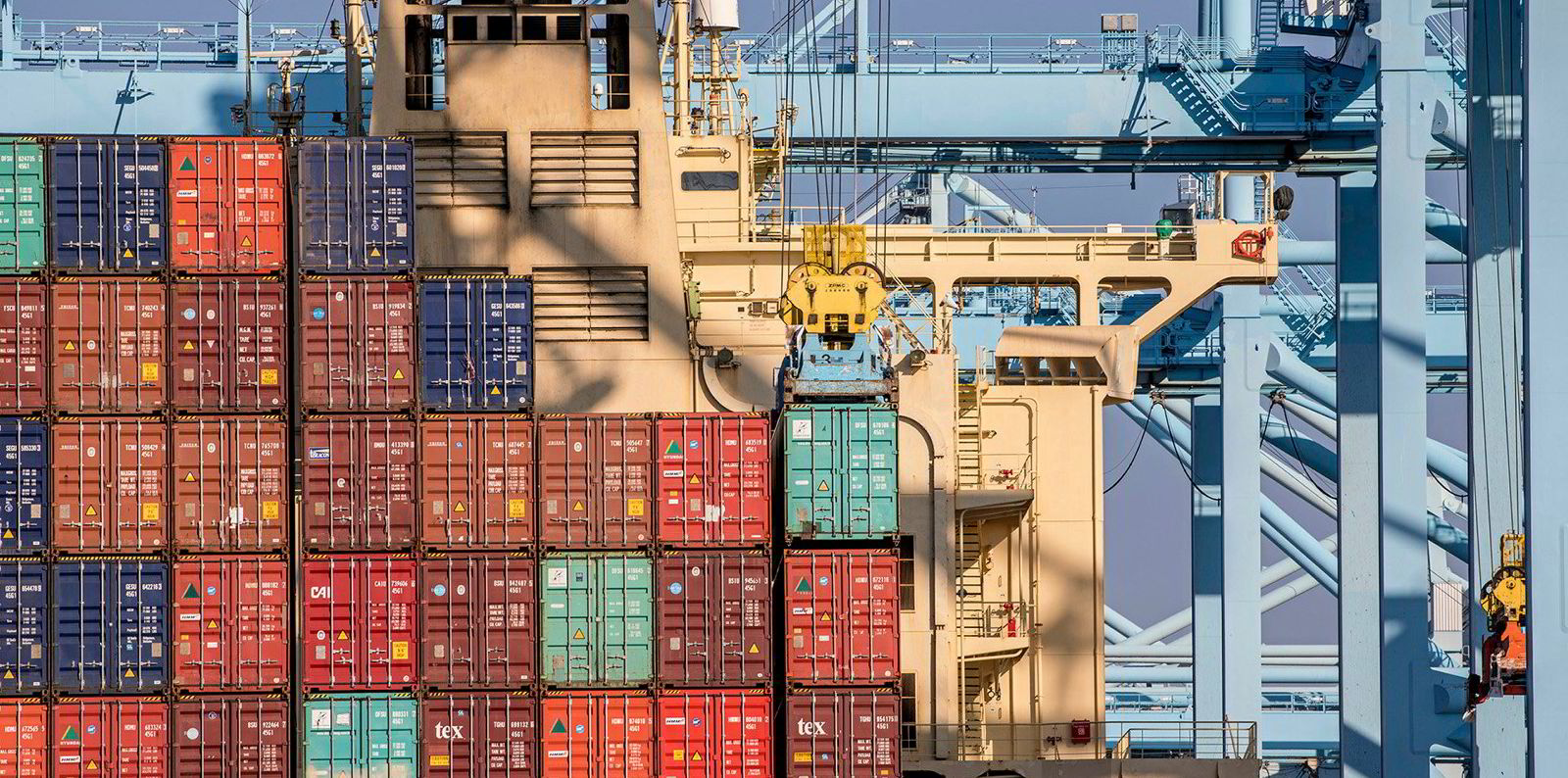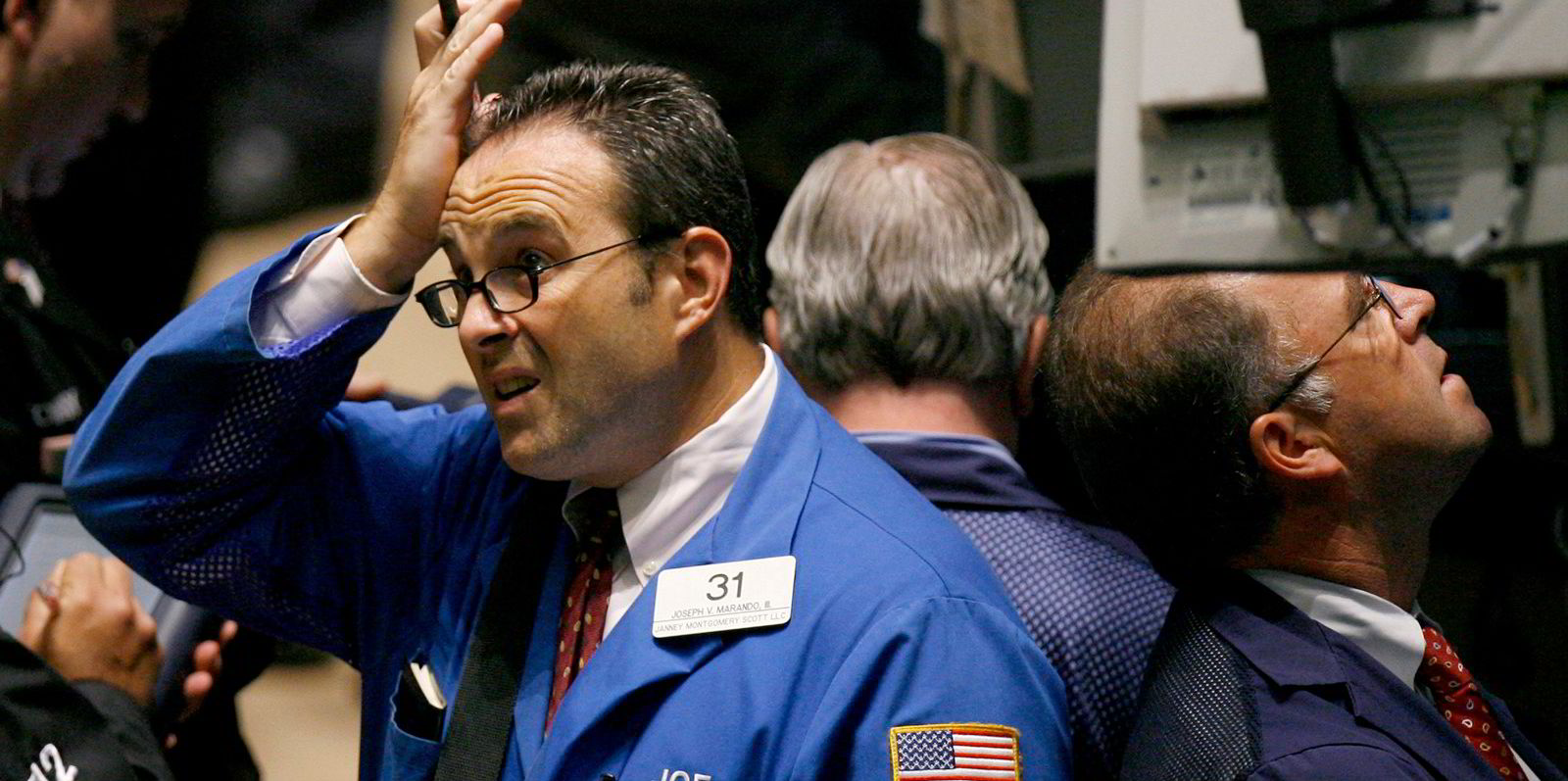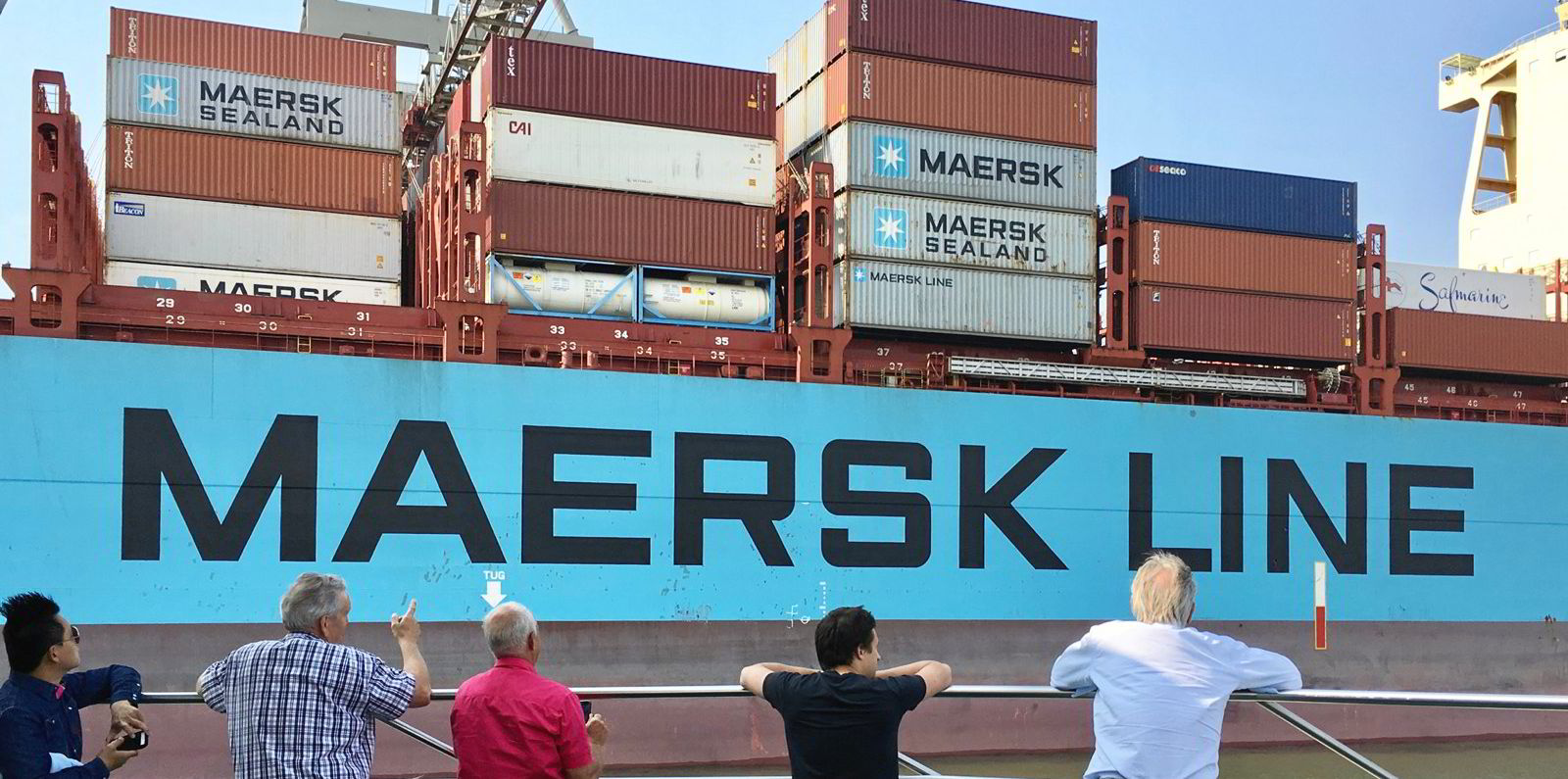Container spot rates on a key trade have fallen below contract rates for the first time since the start of the pandemic.
That could tempt shippers to ditch long-term contracts in favour of the cheaper spot market.
Spot rates from China to the US West Coast (USWC) continued to fall as container flows improve and demand drops.
Short-term rates of $7,768 per 40-ft equivalent unit (feu) were $213 — or 2.7% — below long-term contracted agreements on 21 June, according to assessments by Xeneta.
That follows the rocketing of contracted rates and the ongoing fall in spot rates following the absence of any surge of volumes out of China.
The shift could lead shippers to renegotiate expensive long-term contracts with liner operators, or shift volumes to the spot market, analysts believe.
Long-term rates have more or less stayed stable since April, while spot rates have slowly fallen away from their peak in March.
Short-term rates have climbed 46.5% from $5,304 per feu in the last year, while long-term rates have soared 159.9% from $3,070 per feu in June 2021, according to Xeneta.
That has narrowed the gap between the two markets from a peak of $4,000 in September 2021, before long-term rates hit overdrive and reeled in the difference.
“What we’ve seen over the last year is strong growth for both sets of rates, but really spectacular gains for contracted agreements,” said Xeneta chief analyst Peter Sand.
Driving force
Surging spot rates from China to the USWC have been the engine of the booming container market in the past two years.
But spot rates have fallen 17% so far in June, in signs that consumers could be shifting spending to services or to the inflated cost of necessities, writes Freightos lead analyst Judah Levine.
In addition, an easing of congestion is helping to keep container shipping capacity in rotation.
Minimal port congestion in Shanghai means there is still no sign of the pent-up demand many expected to follow the city’s reopening, he added.
Port congestion has also continued to improve at Los Angeles/Long Beach in the last two months.
Fewer than 20 container ships were waiting for a berth this week, as near-record numbers of containers were processed in May.
This trend could add some more instability, with the prospect of some shippers tempted to shift cargoes to the cheaper spot market.
“Ocean contracts are notorious for not being honoured during market swings,” Levine writes.
‘Inflection point’
In a more bullish assessment, the container market is reaching “an inflection point” as box rates and congestion are now at similar levels as seen last year,” said Fearnley Securities.
Heading into the stronger season, a rerun of 2021 seems likely with more cargoes again flowing out of China, the Norwegian company noted.
That could result in longer supply chains, meaning importers restocking earlier.
“Congestion will continue to be key in maintaining [the] market, we argue, and inefficiencies are still very much the name of the game,” the company added.
Congestion appears to be supporting the market from Asia to the US East Coast (USEC), where spot rates remain 16% higher than a year ago, according to Freightos figures.

Liner operator AP Moller-Maersk warned on 23 June that growing congestion had led to delays of two weeks in Houston and three weeks at Port Newark Container Terminal, and up to five days at other ports on the USEC.
The carrier blamed a higher number of vessels and a shortage of yard space caused by long-standing containers.
Similarly, the situation remains uncertain in Northern Europe, where German port workers staged a second “warning” strike on 23 June, hitting key ports including Hamburg and Bremerhaven.
With the potential for industrial action at USWC ports after 1 July, it remains unclear whether congestion will continue to ease.
“The terminals have been overloaded across the past year, but will that demand continue as inflationary headwinds grow and consumer spending reacts?”, said Sand.
The amount of tonnage waiting outside port anchorage rose past 2.3m teu to a new record high in early June, according to the monthly outlook by Maritime Strategies International (MSI).
But weaker trade volumes in the second half of the year will accelerate the unwinding of quayside and landside congestion through to 2023, it added.
“This will be accompanied by softening market balances as effective capacity returns to the fleet,” MSI said.
That is likely to lead to “a material softening of freight and time charter markets”, it concluded.






